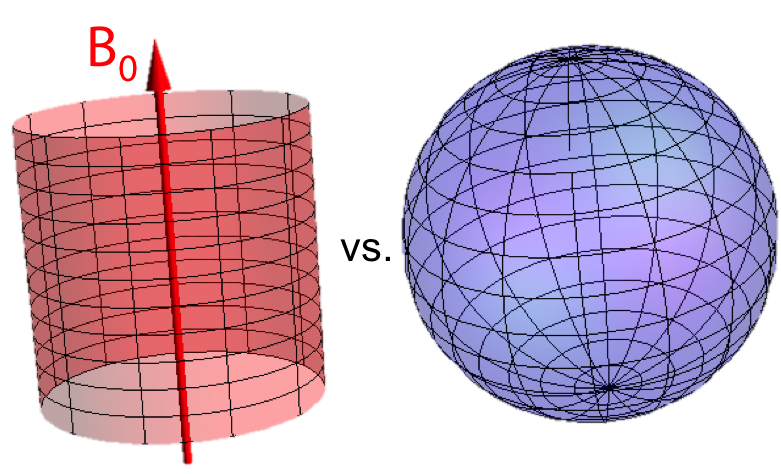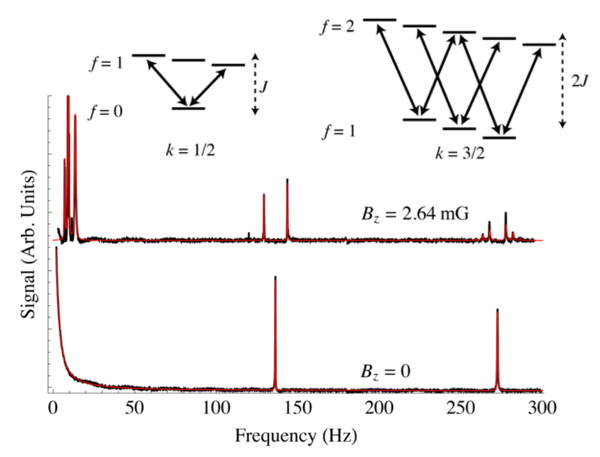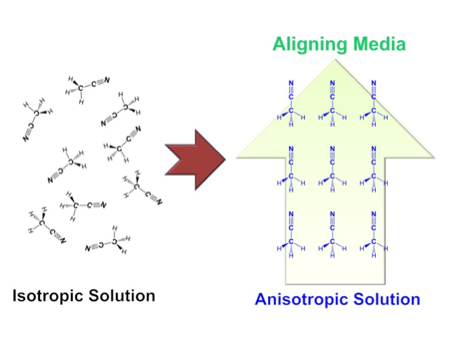 In high-field NMR, the presence of a large applied magnetic field produces a highly anisotropic environment, which truncates other spin interactions by defining a preferred spatial direction. While this is convenient in that it provides an easy-to-understand quantization axis, it can lead to intractably broad signals in samples where anisotropic interactions are significant (e.g. solids). Efforts to remove or average away such interactions can lead to high-resolution spectra, but much of the information encoded by these interactions is inherently lost. An alternative approach is to eliminate the anisotropy imposed by the high-field magnet, as is done in zero-field NMR, which leads to a spherically symmetric environment for spin evolution. In fact, the dominant spin interactions in most of our current zero-field research are the J-couplings, which are invariant to rotations in space. This results in a quantization axis that is not a spatial axis, but is defined only in spin-space. Current research efforts are focused on investigations of the nature of NMR spectroscopy in the spherically symmetric zero-field environment, and also exploring the effects of weak symmetry-breaking by small magnetic fields or oriented/aligned media.
In high-field NMR, the presence of a large applied magnetic field produces a highly anisotropic environment, which truncates other spin interactions by defining a preferred spatial direction. While this is convenient in that it provides an easy-to-understand quantization axis, it can lead to intractably broad signals in samples where anisotropic interactions are significant (e.g. solids). Efforts to remove or average away such interactions can lead to high-resolution spectra, but much of the information encoded by these interactions is inherently lost. An alternative approach is to eliminate the anisotropy imposed by the high-field magnet, as is done in zero-field NMR, which leads to a spherically symmetric environment for spin evolution. In fact, the dominant spin interactions in most of our current zero-field research are the J-couplings, which are invariant to rotations in space. This results in a quantization axis that is not a spatial axis, but is defined only in spin-space. Current research efforts are focused on investigations of the nature of NMR spectroscopy in the spherically symmetric zero-field environment, and also exploring the effects of weak symmetry-breaking by small magnetic fields or oriented/aligned media.
Near-Zero-Field NMR

In an effort to expand the information available in zero-field NMR, we have investigated near-zero-field nuclear magnetic resonance, where the effects of magnetic fields can be treated as a perturbation to the scalar J couplings. This represents a new form of NMR spectroscopy, complementary to high-field NMR, in which heteronuclear scalar couplings are almost always treated as a small perturbation to the primary Zeeman interaction. We found that the presence of small magnetic fields produces easy-to-understand splittings of the zero-field peaks that are in excellent agreement with first-order perturbation theory. We extended the range of the experiments to the regime where Zeeman and J-coupling terms are of comparable strength, resulting in higher complexity, which may potentially be useful for quantum computing.
Residual Dipolar Couplings in Oriented Samples
 It is well known from high-field NMR that liquid state spectra exhibit sharp, well-resolved features due to the rapid reorientation of molecules. This reorientation, on a timescale much shorter than any other interaction in the spin system, effectively replaces all terms in the spin Hamiltonian with their average value. Completely anisotropic interactions, such as the dipole-dipole interaction and parts of the J-coupling tensor, then average to zero. Also known from high-field studies, if the reorientation of the molecules is not isotropic, then these anisotropic interactions are recovered to an extent proportional to the order parameter of the molecules. Due to the anisotropic nature of these couplings, they are inherently sensitive to the geometry of the molecule and as such may have applications to shape-sensitive molecular sensors. Present work involves the study of small molecules in stretched gels. Gels made of crosslinked poly(vinyl acetate) are swelled in confined tubes to induce a uniaxial stretching of the gel. Acetonitrile, chosen as a model 13CH3 spin system, is then partially oriented in the gel. At zero magnetic field, this poses a novel situation: the dominant term in the Hamiltonian is the isotropic J-coupling while perturbations are induced by the anistropic residual dipolar and J-couplings. The response of the zero-field NMR spectrum of the 13CH3 system to changes in order parameter and applied magnetic fields are currently being studied. A combination of numerical simulations and analytical theories will elucidate the spin physics at play.
It is well known from high-field NMR that liquid state spectra exhibit sharp, well-resolved features due to the rapid reorientation of molecules. This reorientation, on a timescale much shorter than any other interaction in the spin system, effectively replaces all terms in the spin Hamiltonian with their average value. Completely anisotropic interactions, such as the dipole-dipole interaction and parts of the J-coupling tensor, then average to zero. Also known from high-field studies, if the reorientation of the molecules is not isotropic, then these anisotropic interactions are recovered to an extent proportional to the order parameter of the molecules. Due to the anisotropic nature of these couplings, they are inherently sensitive to the geometry of the molecule and as such may have applications to shape-sensitive molecular sensors. Present work involves the study of small molecules in stretched gels. Gels made of crosslinked poly(vinyl acetate) are swelled in confined tubes to induce a uniaxial stretching of the gel. Acetonitrile, chosen as a model 13CH3 spin system, is then partially oriented in the gel. At zero magnetic field, this poses a novel situation: the dominant term in the Hamiltonian is the isotropic J-coupling while perturbations are induced by the anistropic residual dipolar and J-couplings. The response of the zero-field NMR spectrum of the 13CH3 system to changes in order parameter and applied magnetic fields are currently being studied. A combination of numerical simulations and analytical theories will elucidate the spin physics at play.
Current Members
John Blanchard
Jonathan King
Tobias Sjolander
Collaborators
Dmitry Budker (UC Berkeley, Physics)
